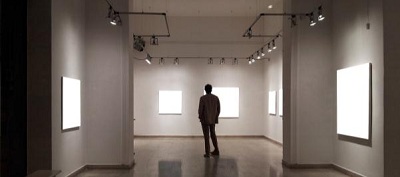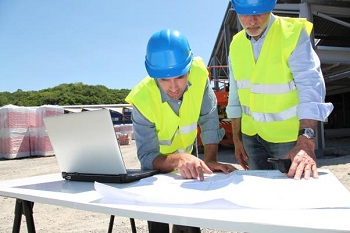Preparation for a capital project on a museum can be a daunting prospect and it is sometimes difficult to visualise the development from start to finish. What are your aspirations? How do you obtain sufficient funds for the project? How can gallery space be used more economically? How do you do all of this whilst remaining within your budget?
It is absolutely fundamental to bring an experienced quantity surveyor on board to relieve you of the burden of these questions.
Your funder will require an estimate of costs for your project. When applying for funding, it is essential that you can discuss your project with the case officer and structure your application to suit the funder’s current priorities and criteria. A much stronger bid can be submitted if you have a qualified cost manager on board to give a more robust estimate of project costs.
A good quantity surveyor can, by utilising benchmarking data from previous similar projects, work out a very close estimate of project costs even before any architect drawings have been put to paper. A comprehensive discussion of your aspirations is usually enough to get started, along with functional content (i.e. m² and the type of build).
At the same time, your project should be treated as individual. For example, you may like to incorporate unique energy saving technologies, which are outside the benchmarking capacity. In this instance, your quantity surveyor can research the best specialist suppliers for you and calculate which elements of your project require these costs to be allocated.

How do you select the most appropriate architect? If you have ever opted for the cheapest wine on a menu only to wince in regret at your first sip, you will understand that the cheapest project team is not necessarily the best value. If you buy cheap, you buy twice!
For a quick and efficient procurement process your quantity surveyor will assist with one of three options: selection via a framework, a design competition, or tender process. Quality should be equally, or ideally more, important than price.
Your idea has to be affordable. Understandably, there is a desire for your museum to stand out from the crowd, to attract a more diverse audience, to increase footfall. The design must attract attention. However, your costs will spiral out of control halfway through if your ambitious design aspirations exceed your budget. A cost advisor, completely independent of design, and by way of a Cost Plan, is in a position to challenge expensive design proposals and suggest more economical, but equally attractive, options.
A good relationship between designer and quantity surveyor is key. A diligent surveyor is advantageous to the architect, as it will prevent having to redesign unaffordable plans at a later stage which will be expensive and time-consuming.
Working in close collaboration with the architect, the quantity surveyor can ensure that, as the design develops, it is in line with the Cost Plan. They can also ensure that the use of space is the most cost effective and best for future income generation. For example, could the design be altered to create additional event space, wedding ceremonies, or extra restaurant space?

Risks can incur cost or delay to the project if not mitigated. Your quantity surveyor should be able to draw up a Risk Register with all potential risks to the project, their mitigation measures and allocation for responsibility of each. Without generating a proper contingency fund within the budget, you could find yourself spending all your money plastering over cracks.
Your programme will dictate cash flow. It is crucial that you have a visual programme of how long the project will take at each stage; at funding, planning, statutory approval, design, procurement, construction and fit-out stages, the speed of spend needs to be accurately calculated for each period and monitored. This will also help to create a robust funder report.
Appropriate cost allocation is vital and a cost manager will ensure that you do not run out of money. You wouldn’t want to spend too much of your budget on foundation work and then have nothing left to fit-out your swanky new exhibition space with cool lighting.

When selecting a contractor, the procurement process can be very time-consuming and difficult to manage alongside a museum director’s day job. A contractor needs to have the right skills and experience to suit your project. Is the company financially secure enough to handle your project? If the value of your project makes up three quarters of their turnover, then you will be in trouble if the contractor suffers any financial difficulties.
On larger capital projects, as stipulated by the European Union threshold1 under EU law, contactor selection must go through OJEU (Official Journal of the European Union). Larger quantity surveying firms may have an in-house procurement team to lift the burden of the tedious administration and legislative duties involved.
Each project has a different emphasis on Time, Quality and Cost, according to the museum’s aspirations. The contract you enter into will be determined by this. There are numerous mechanisms for entering into contracts and your quantity surveyor should develop a robust Procurement and Contract Strategy to analyse these and choose the most suitable for you. They will also advise on performance bonds, warranties and guarantees.
The package of works isn’t the only cost to consider; your quantity surveyor will calculate preliminaries for associated circumstantial costs such as noise, vibration and temporary environmental control (temperature and humidity) for preserving the condition of artefacts and minimising any disruption to the visitor experience.
If your museum needs to remain open to visitors whilst the project is taking place to avoid income flow disruption, careful phasing will need to be managed and costed, with stringent Health and Safety planning.
Make sure your contractor has a Site Agent with a backbone! He will need to communicate effectively with the full spectrum of stakeholders, from plumber to museum director. Choosing the right Site Agent can determine the success or failure of a project.

Cost and time can be affected by any change in brief, from choosing a different type of door to adding a whole extra gallery. A skilled quantity surveyor will anticipate change before it happens.
Expect the unexpected! When Sweett Group worked on a recent grade listed museum development, the skeleton of a Knight was found in an alcove, which was an exciting find for archaeologists on site. To accommodate the ancient inhabitant, the museum’s drainage routes had to be completely redesigned. Without careful management, this could have been expensive and severely delay the project.
As your project progresses, the quantity surveyor will liaise with funders and their monitors to collect draw-down payments. Funders will want to be kept abreast of the project’s progress. Valuations will be sought from contractors and, once the project is complete, the quantity surveyor will agree the final count.
If they have done their job properly, you will open your new museum without empty pockets!
Back to top




